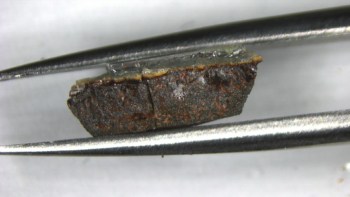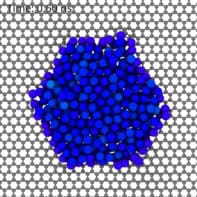
In Greek mythology Sisyphus was condemned by the gods to repeatedly push a heavy boulder to the top of a hill, only to see it roll back down to the bottom. Now, physicists in Germany have used a similar scheme to cool a collection of fluoromethane molecules to a temperature of just a few thousandths of a kelvin. Cooling molecules with more than two atoms had proved very difficult and this latest development could lead to breakthroughs in chemistry, particle physics and even quantum computing.
Over the past few decades physicists have developed a variety of tools for cooling gases of atoms ever closer to absolute zero – with temperatures of less than a millionth of a kelvin reached. This has led to all sorts of breakthroughs, such as the creation of an unusual state of matter known as a Bose–Einstein condensate in which all of the constituent particles exist in a single quantum state.
Cooling molecules down to the same temperatures could also lead to major breakthroughs. Potential applications include the development of quantum computers, in which the necessary strong and stable interaction between quantum bits could be achieved via the long-range electrical forces between very low-energy polar molecules. Ultracold molecules might also be used in delicate processes that are impossible to carry out with warmer, more energetic particles, such as using electromagnetic fields to control chemical reactions at the molecular level or observing the tiny difference in energy between left- and right-handed chiral molecules predicted to follow from an inherent asymmetry in the electroweak force.
Unwanted rotations or vibrations
This greater complexity makes molecules much more difficult to cool than atoms using established techniques. One such technique, laser cooling, involves slowing down – and hence lowering the temperature of – atoms in a gas by making them absorb photons from laser beams pointed in opposing directions. About 10,000 such interactions are needed to cool each particle in the gas and any one interaction could cause unwanted rotation or vibration of a molecule.
Despite these difficulties, in 2010 researchers in the US managed to cool down a gas of diatomic (two-atom) molecules using lasers. And this year another American group achieved a similar result using evaporative cooling, which lowers the temperature of a gas by allowing the most energetic particles to escape. But this latest work by Gerhard Rempe and colleagues at the Max Planck Institute for Quantum Optics outside Munich published in Nature extends cooling to molecules made up of five atoms.
The team used a gas of fluoromethane, its molecules consisting of three atoms of hydrogen, one of carbon and one of fluorine. Rather than rely on the puny kicks of individual photons to slow down the particles in a gas, Rempe’s group instead uses the much greater energy available in an external electric field. The researchers’ “electric trap” consists of two parallel capacitor plates, each 4 cm by 2 cm and separated by a gap of 3 mm. The inside surfaces of the plates are patterned to create an electric field that is uniform in the centre of the gap but that grows stronger closer to the plates.
Climbing the well
Initially, pre-cooled molecules are held in the centre of the trap thanks to the potential well set up by their interaction with the electric field. After being excited to a vibrational state by an infrared laser fired through the trap, the molecules spontaneously decay to an intermediate-energy rotational state chosen so that it creates a deeper potential well than that in the molecules’ initial, lower-energy state. The molecules then figuratively “climb up” the sides of this well, losing kinetic energy as they do so, and are subsequently hit by a beam of microwaves that forces them back down to the edge of the shallower well beneath. As they fall back down the sides of this well, the molecules pick up less kinetic energy than they forego in the intermediate state. This means that, on balance, they lose energy. The idea is that by repeating this process several times the molecules can be cooled to extremely low temperatures.
In fact, the researchers were able to reduce the temperature of about one million fluoromethane molecules by more than a factor of 10, to about 30 mK, in only around a dozen cycles. In a commentary piece accompanying the paper, John Barry and David DeMille of Yale University say that this small number of cycles was crucial, since it allowed the molecules to be cooled even though about 10% of the sample was lost in each cycle because of unwanted rotational or vibrational excitations.
Other researchers contacted by physicsworld.com were also positive. Rudi Grimm of Innsbruck University in Austria says that physicists are “desperately lacking” efficient ways of cooling molecules and that the “proof-of-principle demonstration” carried out by the German group “looks very good”. Wolfgang Ketterle of the Massachusetts Institute of Technology, meanwhile, says he is “impressed” by the latest work, arguing that it and “other recent progress” on molecular cooling “opens the door to ultracold chemistry”.
Breaking the 1 mK barrier
Zeppenfeld says that his group’s next step is to try and get below 1 mK, at which point, he believes, the molecules could be used for applications such as quantum computing. Achieving this, he says, might involve making detection of the cooled molecules more efficient or employing molecules that decay in less time than the roughly 0.1 s typical of fluoromethane, in order to limit unwanted collisions with background gas in the trap.
The cooling scheme is described in Nature.



